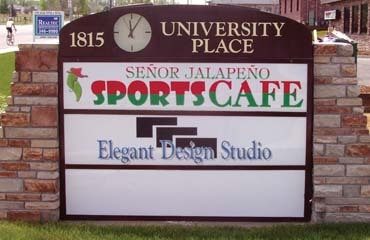I was finishing this issue s article about signage s role in Times Square s New Year s Eve (see ST , May 2006, page 106), which represents the high end of electronic message centers (EMCs). That same day, I received an e-mail from Dee Scott, the executive director of the Midwest Sign Assn. (MSA). DaNite Sign Co. (Columbus, OH) had been cited by Ohio s Dept. of Transportation (ODOT) because its EMC was changing messages more often than every eight seconds, a violation of permissible "dwell time," which is the minimum amount of time a message must remain visible.
DaNite s president, Cal Lutz (the International Sign Assn. s 2000 chairman of the board), responded by writing "technology has made it [the 1996 code] obsolete, especially in regard to the usage of video boards."
Dwell time affects both on- and off-premise signs, but they re regulated dissimilarly. Additionally, in response, while the on-premise sign industry has taken a rather isolated, hard-line EMC stance, the off-premise sign industry has made it more of a concessionary priority.
The newly formed Electronic Display Educational Research Assn. (EDERA) addressed dwell time in a 16-page brochure entitled Signs of Success (see ST, February 2006, page 160). The brochure agrees with Cal: "As is typical with many technological advances, the regulatory environment has been slow to respond to advances in the technology itself."
It cites the 1978 Surface Transportation Assistance Act as the first time "Congress passed legislation dealing with the use of illuminated, variable-message signs along the interstate and federal-aid, primary highway system." That law allowed electronic message displays (EMDs) "which may be changed at reasonable intervals," i.e., addressed dwell times.
The subsequent Federal Highway Administration s (FHWA) 1980 "Safety and Environmental Design Considerations in the Use of Commercial Electronic Variable-Message Signs" study, which was hugely inconclusive, suggested a three-line, 20-character-per-line message needed to remain for 15 seconds. However, it also viewed 3 to 4 seconds as sufficient dwell time for time-and-temperature messages.
Advertisement
Another factor, "change interval," concerns messages that fade in and out. The 1980 study recommends this be minimized to 0.3 seconds. The EDERA questions this change interval s brevity because "government users of signs have utilized 1 to 2 seconds on their own signs as a reasonable interval for message changes." While the 1980 study supported full animation on EMDs in the "urban core," it discouraged such usage on interstate and primary highways.
The EDERA paper denounces any claims that EMDs dangerously distract motorists: "In decades of use and intense scrutiny, no definitive relationship between electronic signs and traffic accidents has been established," and "Animation has now been used on highway-oriented signs in many locations for years, with no reported adverse effect on traffic safety."
Signs of Success contains four model sign codes to reflect four levels of message changeability: static displays only, static displays with a "fade" effect, static displays with a "scrolling" transition, and full animation.
For the out-of-home (billboard) perspective, I called Myron Laible, a vice president of the Outdoor Adv. Assn. of America (OAAA), who handles the association s legislative affairs. Currently, all changeable messages on billboards are governed by a 1996 FHWA memorandum that softens the 1978 law for off-premise signs because of "many technological changes in signs…that require the State and FHWA to interpret the agreements with those changes in mind." Specifics are determined by the individual states "if such interpretation is consistent with State law."
Ohio doesn t have it too bad. Four states allow no billboards at all (Alaska, Hawaii, Maine and Vermont). Five other states (Arizona, Delaware, New Hampshire, North Dakota and Wyoming) don t allow any changeable copy whatsoever, although Laible said Delaware "is willing to listen and realizes it s somewhat out of the mainstream." The other 41 generally allow dwell times ranging from 4 to 10 seconds, so Ohio is just below average in leniency.
Five states (Maryland, Massachusetts, Oregon, Texas and Washington) only allow the manual message changes in tri-panel displays. One state currently limits message changes to every hour, but OAAA is currently in negotiations with that state s DOT.
Advertisement
Surprisingly, typically anti-sign California was the first state to accommodate changeable-copy billboards, and its four-second dwell time is the most liberal allowance. Minnesota, similarly, embraced changing technology. With an impressive empirical approach, its engineers objectively studied billboard spacing and speed limits, and settled on a six-second dwell time.
As a group, OAAA doesn t recommend Times Square/Las Vegas-type digital signage on billboards. On Sunday, April 2, its board of directors was scheduled to issue a policy statement that prohibits animation, scrolling, flashing or any type of full-video capabilities.

 Tip Sheet4 days ago
Tip Sheet4 days ago
 Business Management2 weeks ago
Business Management2 weeks ago
 Real Deal5 days ago
Real Deal5 days ago
 Women in Signs2 weeks ago
Women in Signs2 weeks ago
 Benchmarks1 day ago
Benchmarks1 day ago
 Editor's Note1 week ago
Editor's Note1 week ago
 Women in Signs5 days ago
Women in Signs5 days ago
 Line Time2 weeks ago
Line Time2 weeks ago














